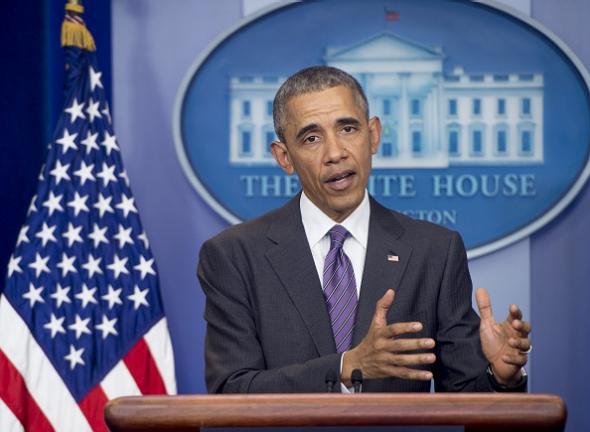The White House launched two new gun-control initiatives last Friday via a Facebook post by the president, a detailed press release by Valerie Jarrett, and a 16-page joint report by the departments of Justice, Homeland Security, and Defense. One of the initiatives involves the integration of federal mental-health data into background checks; the other, which was given prominent coverage in the New York Times, the Washington Post, and Mother Jones, among other publications, involves administration support for “smart gun” technology that would prevent weapons from being fired by anyone other than authorized users. Here’s the Times’ headline:

Screenshot/New York Times
That’s an accurate summary of what happened, but reading the actual 16-page administration report on the issue is a reminder of how slowly gun-safety ideas move in the United States and how little authority the White House has to act unilaterally on the issue—or, in other words, a reminder of how little impact Obama’s decision to put his weight behind smart guns might actually have.
The joint report underlines, for instance, just how long smart-gun development has been going on for, noting that the first federal report on the subject was published in 1996 after a “multiyear” research process. Some federal grant money subsequently went toward the development of the technology—but only a total of $12.6 million over two decades. (The gun-violence news site the Trace, which Slate has partnered with in the past, notes that the Clinton administration arranged for Smith & Wesson to research smart guns privately in 2000 only for the company to change its mind after a backlash.) In January 2013 Obama “directed DOJ to review existing and emerging gun safety technologies and then issue a report on their availability and potential use.” That led to another report and a coinciding DOJ initiative called the “Gun Safety Technology Challenge,” which involves monetary prizes for private manufacturers doing smart-gun research. The prizes, which haven’t yet been awarded to anyone, max out at $15,000 per manufacturer. And the one company that’s actually developed market-ready smart guns, meanwhile, has not been able to sell them because of heavy boycott pressure.
That brings us to the White House’s new gambit: Developing a set of standards for smart guns in collaboration with state and local law-enforcement authorities across the country. The idea is that creating guidelines for reliability and ease of use will encourage manufacturers to make smart guns that police departments and other groups will want to buy, thus creating a market incentive for their manufacture and real-life proof of their efficacy. The new report says the government will also “seek ways to highlight the availability of federal grant funding to support the purchase of firearms and related equipment for law enforcement use.” But participation in the program by state and local agencies will be completely voluntary, and the administration doesn’t actually have any new grant funding to offer; it’s just going to highlight the funding that already exists. Emphasizing the dearth of official information-gathering on the subject of gun violence, meanwhile, the report acknowledges that neither the Department of Justice nor the Department of Homeland Security have any available data regarding how many illegally trafficked firearms were originally lost by or stolen from law-enforcement officers or on how many accidental shootings involve law-enforcement officers’ family members.
It’s not as if these piece-meal efforts demonstrate a lack of willpower on the White House’s part. Obama has been consistently vocal in recent years on the subject of gun violence. But the executive branch is, of course, limited in what it can do by the Constitution, and getting Congress to do anything at all about gun violence is very, very hard. Combine that with the significant market pressure exerted by paranoid gun-rights activists and you get a federal smart-gun initiative that has the full backing of the president but still doesn’t amount to much more than rhetoric.
